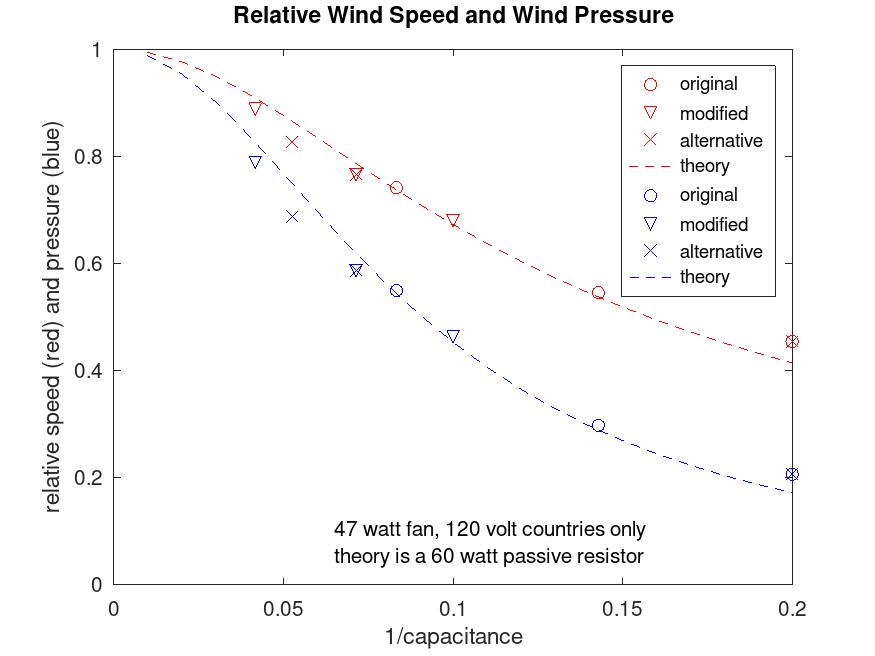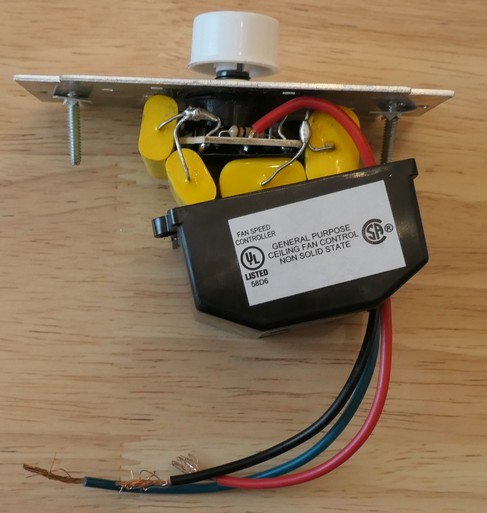I bought a fan (UNO) which is known for being exceptionally quiet. But when installed using my existing wall fan speed control, at full speed there was a bit of motor hum. And when I turned down the speed, a second hum appeared, which became quite noticeable at low speeds. Then I blundered onto this Leviton, and the word "quiet" caught my attention, so I ordered and installed it instead of the old one.
Well, that worked perfectly! The fan is absolutely silent now! I have to look at it or notice the airflow to check whether it is on.
I opened up the spare that I also bought to see what was inside, and I found two capacitors, one 5 uF and one 7uF, see pic. That explains why the control is not creating any hum at all. Capacitors preserve the harmonic AC wave form.
Installation was very easy after pulling the fuse. The thing goes in between the hot wire coming from the fuse and the hot wire going to the fan. (Both are normally black, and they were in my case. I had to use a multimeter after temporarily restoring the fuse to figure out which of the two was the one coming from the fuse; don't do that at home unless you are an electrician or reckless.) There was also an earth to connect, and I needed a bigger wire nut than provided to connect it to two stranded-together copper earth wires found in the electrical box. (The old control had no earth, although according to one source, it *should* have had one for reliable operation.) Make sure to test that each wire in the wire nuts is in there secure and then put some electrical tape on the wires too.
I have none of the problems with poor electrical contacts (like no contact or sparking) reported by some other reviewers. But I plan to get two spares, just in case.
There is a sticker on the thing that says "universal fan controller", but don't you believe it. According to the instruction sheet, the fan must be 120 VAC and less than 1.5A. (One reviewer who complained about the Leviton installed it onto a fan that googled to be a 230 VAC 3-speed one. I do not know how.)
In addition, the motor must be "split capacitor" or "shaded pole" to "avoid overheating or damage". All I know is that there are a couple of capacitors on my fan motor. But I checked for overheating experimentally, by running the fan for one hour at each of the four speeds, starting with low, and then feeling if the metal face plate of the switch became warm (it never did), or the metal cover of the motor became warm (it did become somewhat warm at the max setting, but not hot).
Correction: the seller informs me that the UNO is in fact split capacitor. So that is OK then.
Update 1/22/24: I found that going from the "max" to hi" setting, the wind pressure produced by my fan dropped quite a lot. Indeed, measuring the fan blade speed from videos showed the wind pressure to go down by as much as 45% (see the plot in pic 2). (Such a big drop should not occur in 220 volt countries unless the fan uses a lot more watts, but I am in the USA.) I did not like it too much, since this midsize fan operates in an open airspace that is roughly 2/3 of the complete airspace of my single story townhouse. Now to increase fan speed, you want to increase the capacitors (capacitance is somewhat like an inverse resistance). So my handyman drilled out the rivets of two of these fan controllers, removed the capacitors of the second controller, and soldered them on the first one, in parallel to the ones already there, see pic 3. Miraculously, the plastic cover still fit over this bigger combination, so he just riveted it back together again. Warning: to minimize the risks of electrocution and your house burning down, this should only be done by a qualified electrician. For the modified controller, the wind pressure only dropped 21% going from max to hi. I can no longer get the very low fan speeds, but surely I will not miss them. (If you want to keep the speed at "lo" but increase that at "hi", an alternative is to leave out the second 5 uF capacitor.)


